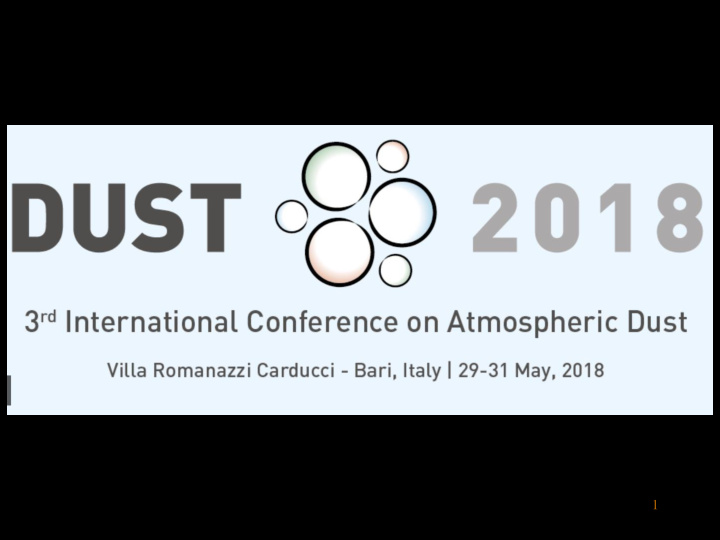



1
DustSafe : global insights into the composition and hazard of household dusts through citizen- led science N. America Asia Australia EU - UK
Why are indoor dusts a potential problem and why Citizen-Science approach? • Fine particles - contaminants readily absorbed. • Young children most at risk • higher absorption rates (e.g. Pb) • more hand - mouth activity. • Growing need for more effective and inclusive public engagement processes to support environmental health knowledge
Jane.entwistle@northumbria.ac.uk DustSafe THE PROJECT Initial context DustSafe Next steps Outcomes Results 4
DustSafe 2017-2021 Phase 1: • Engage citizens to collect and submit vacuum dust. • characterise metals/metalloids by XRF • Information on the science related to dust and contaminants, and on what to do next where elevated contaminants are identified. Phase 2: • Dust 360 ° Further characterisation - microbial components, mineralogy, magnetic signature, allergens, flame retardants, pesticides, fibres/micro- plastics …
DustSafe ‘phase 1’ approach • Advertise the program via media and existing email databases / Facebook. • Citizens register online and complete household questionnaire [house age, home/household characteristcs] • Vacuum dust mailed/collected for XRF analysis [and XRD in Australia]. • Summary report returned by email. • Maps and graphs of suburb level data to be generated on program web site.
DustSafe http://www.360dustanalysis.com
Jane.entwistle@northumbria.ac.uk DustSafe RESULTS Initial context DustSafe Next steps Outcomes Results 8
DustSafe UK pilot [Newcastle Biomonitoring Study] Raised Pb levels in our urban soils – backtracking particles into homes; deposition on crops 9 Raising environmental health knowledge
DustSafe UK pilot [Newcastle Biomonitoring Study] Pb sources Samples Collected Pathways Factors? • Garden Soil • Diet Garden vegetables Allotment Gender? • Tap water Ingestion • House dust Age? • Atmospheric Home Behaviours? Soil deposition • Exposure Inhalation questionnaire Work & Dust • Food frequency Hobbies questionnaire Age? Osteoporosis? • Blood Internal exposure/ body burden • Saliva
DustSafe UK [Newcastle Biomonitoring Study] Q: What is the typical conc. of potentially harmful elements (PHE) in indoor vacuum dust? 11
‘Global’ indoor vacuum dust Median (mg/kg) by XRF Element Australia Newcastle Canada (Rasmussen et al. (n=95) (UK) 2013) (n = 51) (n = >1000) Arsenic 13 5.66 7.7 Cadmium <LOD <LOD 3.8 Chromium 66 54.2 1.01 Copper 173 119 217 Manganese 189 243 no data Nickel 31 34.8 73.3 Lead 405 212 119 Zinc 931 664 749 <LOD – below the limit of detection Q: What is the typical conc. of PHE in indoor vacuum dust? 12
Jane.entwistle@northumbria.ac.uk DustSafe OUTCOMES? Initial context DustSafe Next steps Outcomes Results 13
Outcomes • Contribute to international resource and databank. • Assist in characterising hazards from dust and risks in the home environment. • Metadata explored using GIS for investigation of spatial trends. • Develop Environmental Health knowledge
THANK YOU Jane A. Entwistle (Northumbria University, UK) Gabriel Filippelli (Indiana University-Purdue University, USA) Mark P. Taylor & Paul Harvey (Macquarie University, Australia) Ming-Hung Wong (The Education University of Hong Kong, Hong Kong) And the wider team N. America Asia Australia EU - UK
Recommend
More recommend